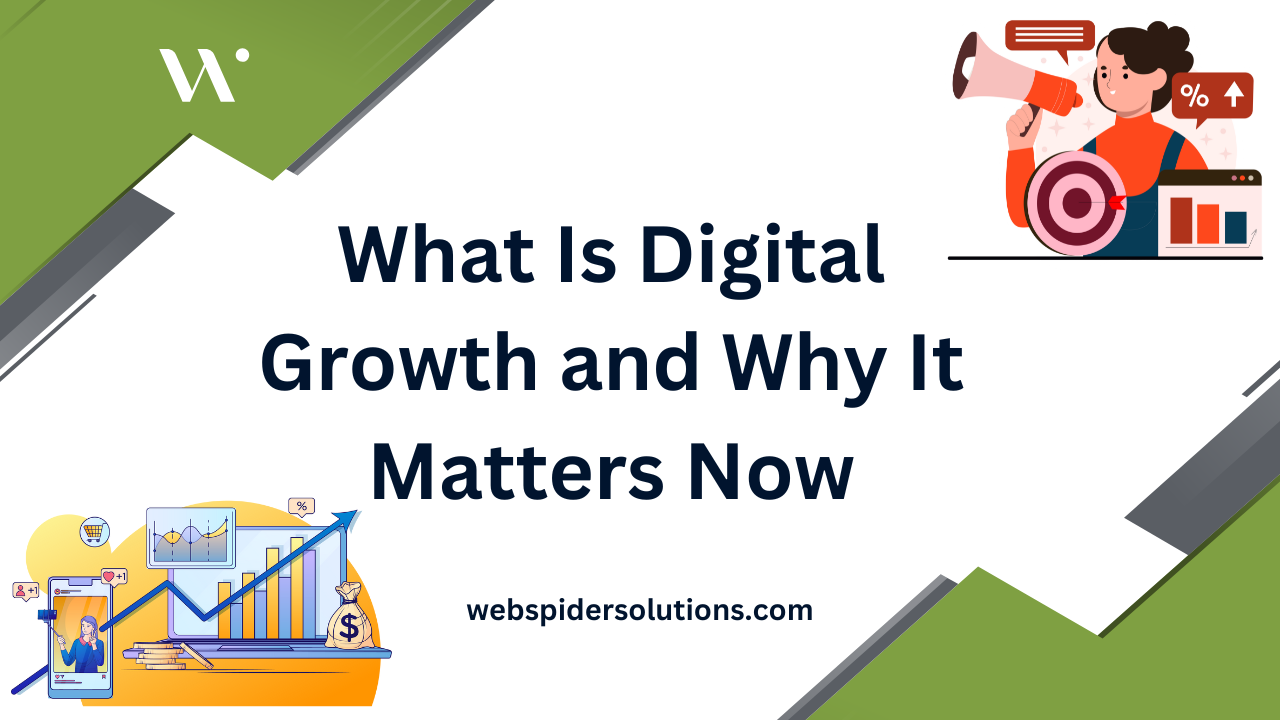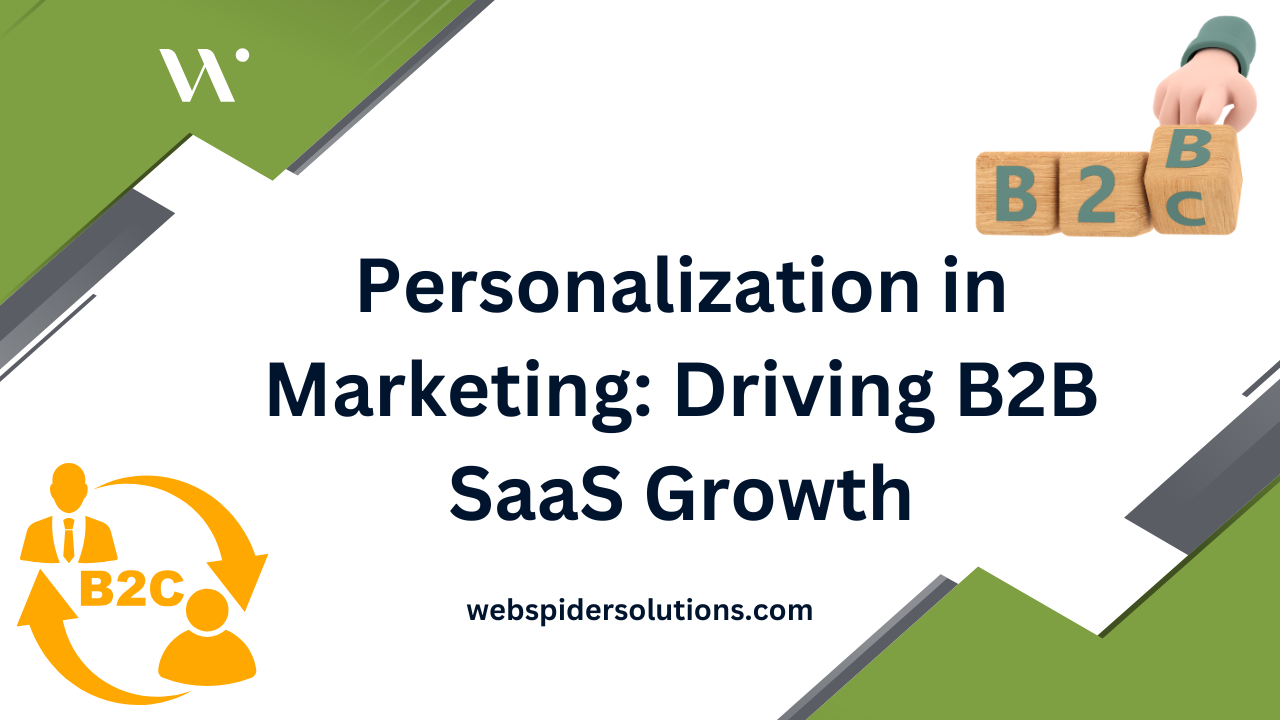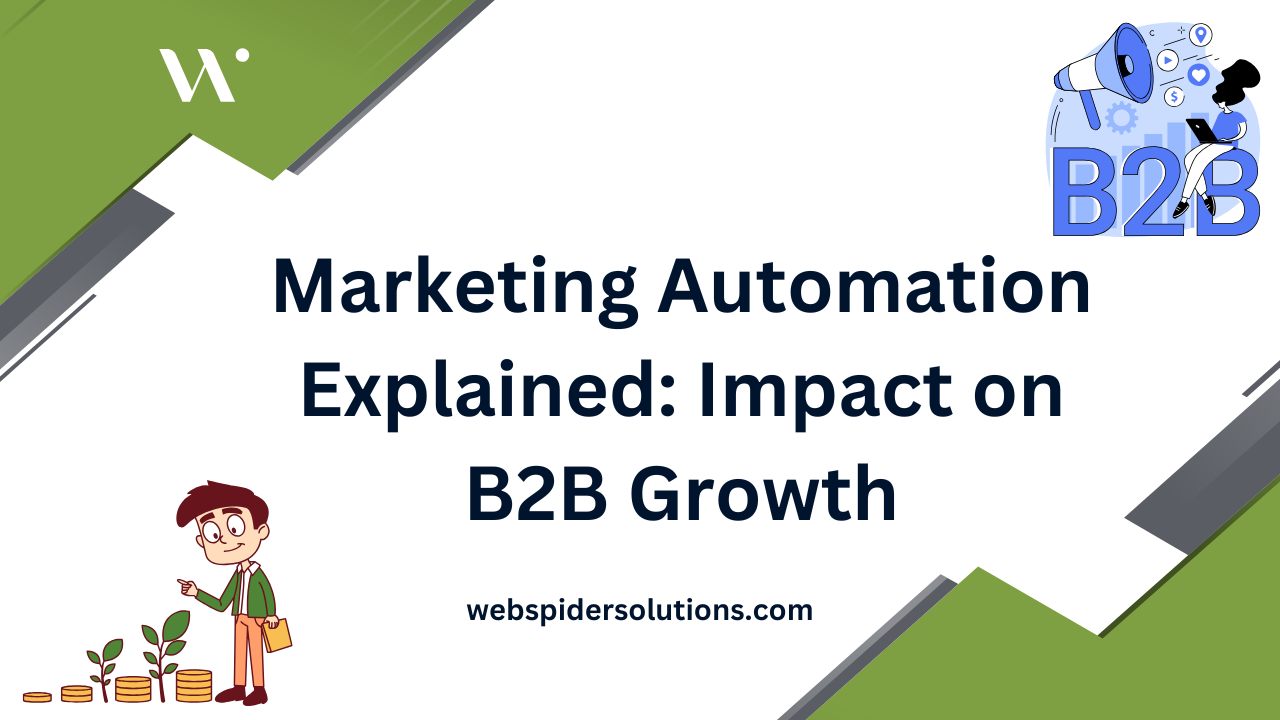Every company wants to win in 2025, but nowhere is that harder than in fiercely competitive industries. Did you know that companies who deeply analyze their market are 3.5 times more likely to achieve significant growth? Most think fresh tech or a flashy brand is the secret to winning, but the real advantage comes from building strategies that are both grounded in data and flexible enough to change fast. Curious how the pros actually do it?
Table of Contents
- Understanding The Core Of Marketing Strategy
- Essential Steps To Building A Marketing Strategy
- Tailoring Your Strategy For Competitive Industries
- Measuring Success And Optimizing Results
Quick Summary
| Takeaway | Explanation |
|---|---|
| Conduct thorough market research. | Rigorous market analysis increases growth potential and informs targeted marketing strategies. |
| Set SMART strategic objectives. | Specific, measurable, achievable, relevant, and time-bound goals connect marketing efforts to overall business outcomes. |
| Embrace data-driven marketing. | Utilize advanced analytics for precision targeting to enhance customer engagement and optimize campaign effectiveness. |
| Differentiate your value proposition. | Craft compelling narratives that resonate with your audience to stand out in crowded markets. |
| Implement continuous optimization. | Ongoing refinement based on performance metrics ensures adaptability in a dynamic market environment. |
Understanding the Core of Marketing Strategy
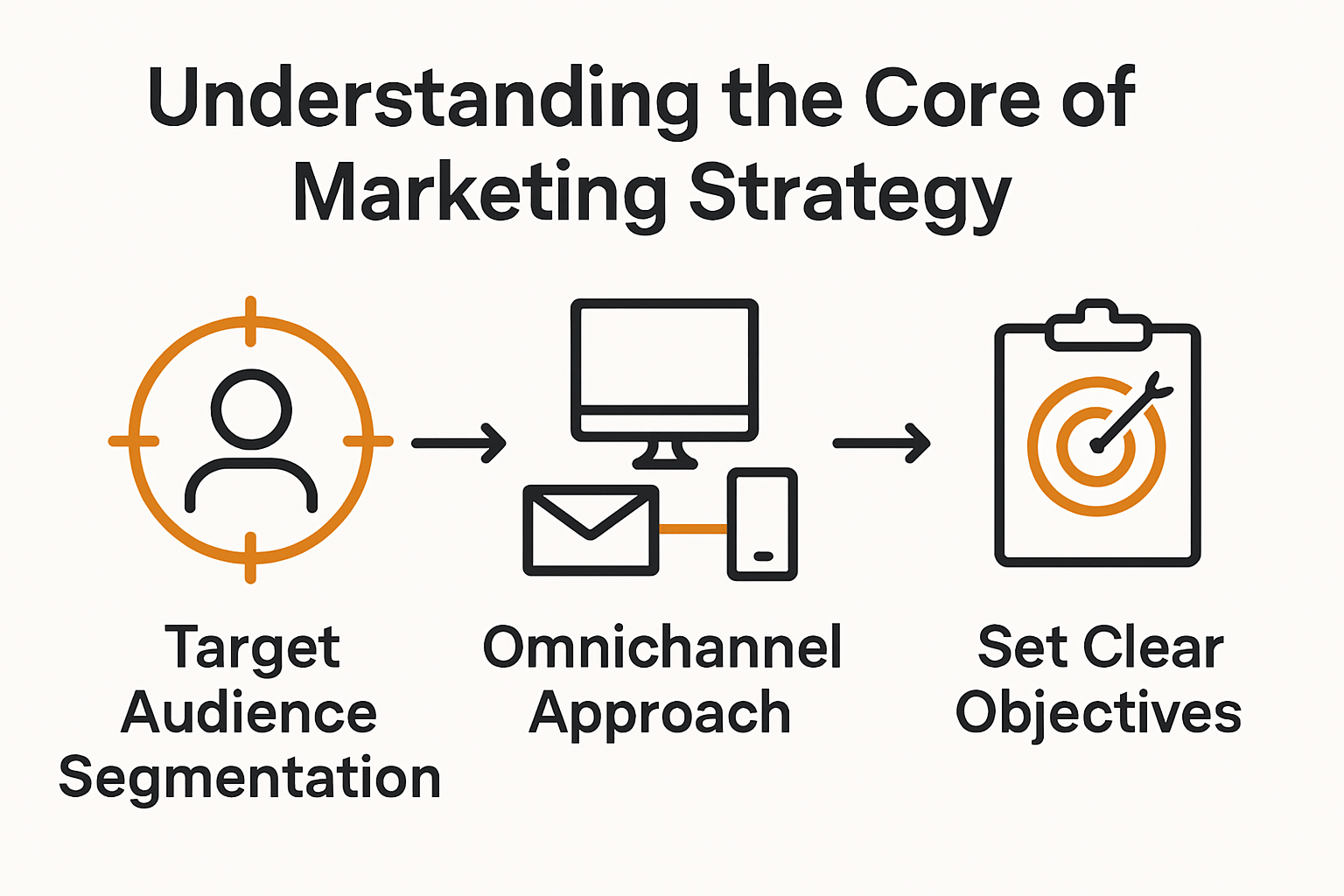
Building a marketing strategy represents a systematic roadmap that transforms business objectives into actionable, measurable marketing initiatives. At its fundamental level, a marketing strategy serves as a comprehensive blueprint that guides organizations in connecting with their target audience, differentiating from competitors, and achieving sustainable growth.
The Strategic Foundation of Marketing
A robust marketing strategy begins with understanding your business’s unique value proposition and how it resonates with potential customers. According to Harvard Business Review, successful strategies are built on deep market insights and a clear understanding of customer needs. This means conducting thorough market research, analyzing competitive landscapes, and identifying precise customer segments that align with your product or service offerings.
Marketing strategies are not static documents but dynamic frameworks that adapt to changing market conditions. They require continuous evaluation and refinement. McKinsey & Company emphasizes that organizations must develop strategies that are flexible enough to respond to emerging trends while maintaining a consistent core message.
Key Components of an Effective Marketing Strategy
Several critical components distinguish exceptional marketing strategies from generic approaches. First, a clear definition of target audience demographics, psychographics, and behavioral characteristics enables precise messaging and channel selection. Second, establishing measurable goals that align with broader business objectives ensures strategic coherence.
Effective marketing strategies also integrate multiple channels seamlessly. This means developing a holistic approach that combines digital marketing, content creation, social media engagement, and traditional marketing techniques. Gartner Research suggests that modern marketing strategies must be omnichannel, providing consistent experiences across all customer touchpoints.
Technology and data analytics play an increasingly pivotal role in strategy development. Advanced marketing strategies leverage predictive analytics, machine learning, and comprehensive data insights to personalize customer experiences and optimize marketing investments. By understanding granular customer behaviors and preferences, businesses can create more targeted, efficient marketing campaigns.
Ultimately, building a marketing strategy is about creating a structured yet adaptable framework that transforms business vision into measurable market performance. It requires a delicate balance between strategic planning, creative execution, and continuous optimization. Check out our comprehensive guide on creating effective digital marketing strategies to dive deeper into practical implementation techniques.
The most successful marketing strategies are those that remain true to a brand’s core identity while being nimble enough to embrace innovation and respond to evolving market dynamics.
To better understand the fundamental building blocks of an effective marketing strategy, the table below summarizes the key components discussed above and their roles in driving success.
| Component | Role/Description |
|---|---|
| Target Audience Definition | Identifies demographics, psychographics, and behaviors for precise messaging and channel selection |
| Measurable Goals (aligned w/ business) | Ensures strategic coherence by tying marketing objectives to broader business outcomes |
| Omnichannel Integration | Provides consistent brand experiences across all customer touchpoints |
| Technology & Data Analytics | Enables personalization, predictive targeting, and campaign optimization |
| Continuous Evaluation & Optimization | Maintains adaptability and relevance in fast-changing markets |
| Strong Value Proposition | Differentiates the brand and resonates with customer needs |
Essential Steps to Building a Marketing Strategy
Building a marketing strategy requires a methodical approach that transforms theoretical concepts into practical, executable plans. Each step must be carefully designed to create a comprehensive roadmap that aligns business objectives with market opportunities.
Conducting Comprehensive Market Research
The foundation of any effective marketing strategy begins with rigorous market research. According to Forrester Research, businesses that invest deeply in understanding their market landscape are 3.5 times more likely to experience significant growth. This involves gathering detailed insights about target audiences, analyzing competitor positioning, and identifying emerging market trends.
Effective market research goes beyond surface level data. It requires a multifaceted approach that includes quantitative analysis of demographic information, qualitative exploration of customer motivations, and comprehensive examination of industry dynamics. PwC Global recommends utilizing both primary and secondary research methods to develop a nuanced understanding of market potential.
Developing Clear Strategic Objectives
Translating market research into actionable objectives is crucial for marketing success. Strategic objectives must be specific, measurable, achievable, relevant, and time bound (SMART). These objectives should directly connect to broader organizational goals, creating a clear pathway for marketing initiatives.
Key strategic objectives might include increasing market share, launching new product lines, expanding into new customer segments, or improving brand recognition. Each objective requires precise metrics and key performance indicators (KPIs) that enable accurate tracking and evaluation. Check out our comprehensive guide on creating effective digital marketing strategies to understand how to set and implement these objectives effectively.
Modern marketing strategies must also incorporate flexibility. The rapid pace of technological and market changes demands that objectives can be quickly adjusted in response to emerging opportunities or challenges. This requires developing adaptive frameworks that allow for strategic pivoting without losing sight of core business goals.
Implementation and Continuous Optimization
Successful marketing strategy implementation demands a systematic approach to execution and ongoing refinement. This involves creating detailed tactical plans for each marketing channel, allocating appropriate resources, and establishing robust monitoring mechanisms.
Digital technologies have transformed strategy implementation, enabling real time data collection and analysis. Advanced analytics platforms now allow marketers to track campaign performance with unprecedented granularity, providing immediate insights that can inform strategic adjustments. Continuous optimization becomes not just a recommended practice but a fundamental requirement for competitive marketing approaches.
The most effective marketing strategies are those that balance strategic vision with tactical agility. They create a dynamic framework that can rapidly respond to market shifts while maintaining a consistent brand narrative. By following a structured approach of research, objective setting, and continuous optimization, businesses can develop marketing strategies that drive meaningful growth and competitive advantage.
The table below outlines the essential steps for building a marketing strategy, along with key actions and outcomes associated with each stage.
| Step | Key Actions | Expected Outcome |
|---|---|---|
| Market Research | Gather audience & competitor insights; analyze trends | Informed strategy foundation |
| Strategic Objectives | Define SMART goals aligned with business aims | Clear targets & performance metrics |
| Tactical Planning & Resource Allocation | Develop channel-specific plans; assign resources | Effective, organized campaign execution |
| Implementation | Launch campaigns; activate on chosen platforms | Audience engagement & initial results |
| Continuous Optimization | Monitor KPIs; adjust based on real-time feedback | Improved performance & adaptability |
Tailoring Your Strategy for Competitive Industries
Competitive industries demand marketing strategies that go beyond generic approaches, requiring sophisticated, nuanced tactics that differentiate businesses in crowded marketplaces. Success hinges on developing unique value propositions and implementing targeted strategies that resonate with specific audience segments.
Understanding Industry Dynamics
Each competitive industry presents distinct challenges and opportunities that necessitate specialized marketing approaches. Deloitte Global research indicates that companies which thoroughly analyze their industry ecosystem are 70% more likely to develop breakthrough marketing strategies. This involves deep comprehension of competitive landscapes, technological disruptions, and emerging consumer behavior trends.
Industry analysis requires examining multiple dimensions beyond surface level metrics. Businesses must investigate technological innovations, regulatory environments, economic shifts, and evolving customer expectations. Boston Consulting Group emphasizes that successful strategies integrate comprehensive industry intelligence with forward looking predictive modeling.
Differentiation and Positioning Strategies
In highly competitive markets, differentiation becomes the critical determinant of marketing success. Organizations must craft compelling narratives that clearly communicate their unique value propositions. This means moving beyond product features to articulate deeper brand promises that connect emotionally with target audiences.
Effective positioning strategies require a multifaceted approach. Businesses must simultaneously highlight their distinctive capabilities while addressing specific customer pain points. Advanced segmentation techniques enable more precise targeting, allowing companies to create hyper personalized marketing messages that cut through marketplace noise.
Technology plays a transformative role in competitive differentiation. Check out our comprehensive guide on creating effective digital marketing strategies to understand how innovative technological approaches can provide competitive advantages.
Adaptive and Data Driven Approaches
Competitive industries demand marketing strategies that are inherently flexible and powered by sophisticated data analytics. Real time data integration allows businesses to rapidly adjust their approaches in response to market shifts, customer feedback, and emerging competitive threats.
Data driven marketing strategies leverage advanced predictive analytics, machine learning algorithms, and comprehensive customer insights to create more targeted, efficient campaigns. By understanding granular customer behaviors and preferences, businesses can develop highly personalized marketing initiatives that significantly improve engagement and conversion rates.
The most successful marketing strategies in competitive industries are those that balance strategic vision with tactical agility. They create dynamic frameworks capable of rapid adaptation while maintaining consistent brand narratives. By embracing continuous learning, technological innovation, and customer centric approaches, businesses can develop marketing strategies that not only survive but thrive in complex, rapidly evolving competitive environments.
Measuring Success and Optimizing Results
Measuring marketing strategy effectiveness is not just about tracking numbers but understanding the deeper narrative behind performance metrics. Successful organizations develop comprehensive measurement frameworks that provide actionable insights and enable continuous strategic refinement.
Key Performance Indicators and Metrics
Effective marketing measurement requires a holistic approach to defining and tracking key performance indicators (KPIs). Google Analytics recommends establishing clear, measurable objectives that directly align with broader business goals. These metrics extend beyond traditional measurements like website traffic and conversion rates to include more nuanced indicators of marketing performance.
Advanced marketing teams now utilize sophisticated multi dimensional metrics that capture customer engagement, brand perception, and long term value creation. Harvard Business Review suggests that comprehensive performance tracking should include metrics such as customer lifetime value, brand equity score, and customer acquisition cost. These indicators provide a more comprehensive view of marketing strategy effectiveness.
Advanced Analytics and Performance Optimization
Modern marketing optimization leverages cutting edge data analytics and machine learning technologies to transform raw performance data into strategic insights. McKinsey Digital highlights that businesses utilizing advanced predictive analytics can improve marketing efficiency by up to 30% and significantly enhance targeting precision.
Data driven optimization involves continuous experimentation and rapid iteration. Marketing teams must develop agile frameworks that allow for quick strategic adjustments based on real time performance insights. Check out our comprehensive guide on boosting digital marketing ROI to understand how to systematically improve marketing performance.
Continuous Learning and Strategic Adaptation
Successful marketing strategies are not static documents but living frameworks that evolve through continuous learning and adaptation. This requires establishing robust feedback mechanisms that capture both quantitative performance data and qualitative insights from customer interactions.
Technology plays a crucial role in enabling this continuous optimization process. Advanced marketing analytics platforms now provide real time dashboards that track performance across multiple channels, enabling marketing teams to make data informed decisions with unprecedented speed and accuracy.
The most effective marketing strategies treat measurement not as a periodic review but as an ongoing dialogue between data, customer behavior, and strategic objectives. By embracing a culture of continuous learning and rapid adaptation, businesses can develop marketing approaches that are not just responsive but predictive, anticipating market shifts and customer needs before they fully emerge.
Ultimately, measuring marketing success is about creating a dynamic ecosystem of performance tracking, insights generation, and strategic refinement. It demands a sophisticated approach that balances quantitative rigor with creative strategic thinking.

Frequently Asked Questions
What are the key components of an effective marketing strategy for competitive industries?
An effective marketing strategy for competitive industries includes a clear target audience definition, measurable goals aligned with business objectives, omnichannel integration, technology and data analytics, and continuous evaluation and optimization.
How can I conduct comprehensive market research?
To conduct comprehensive market research, gather detailed insights about your target audience, analyze competitor positioning, and identify emerging market trends using both quantitative and qualitative research methods.
What are SMART objectives, and why are they important in a marketing strategy?
SMART objectives are Specific, Measurable, Achievable, Relevant, and Time-bound goals. They are important because they create a clear pathway for marketing initiatives and ensure alignment with broader organizational goals.
How do I measure the success of my marketing strategy?
You can measure the success of your marketing strategy by tracking key performance indicators (KPIs) that align with your strategic goals. These may include metrics such as customer lifetime value, conversion rates, and brand equity score, combined with advanced analytics for deeper insights.
Take Your 2025 Marketing Strategy from Theory to Winning Results
Feeling the pressure of intense competition in your industry? You’ve just explored the core challenges of building a marketing strategy for 2025—from market research to actionable data-driven tactics. Yet the reality is that execution is where most strategies falter. Many businesses struggle to transform market insights into measurable growth, miss out on omnichannel opportunities, or waste effort on campaigns that do not deliver real traction. The stakes are especially high for those fighting to stand out in crowded markets, as highlighted throughout this guide and in our Stories Archives.
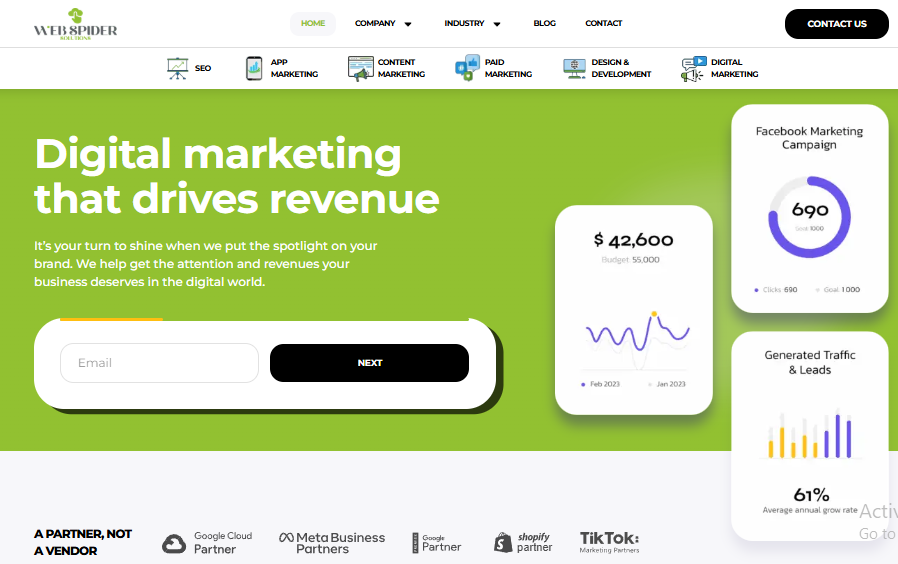
You do not have to navigate these challenges alone. Our expert team at Web Spider Solutions specializes in turning ambitious strategies into real, lasting gains. From technical SEO and content creation to analytics-driven optimization, we deliver solutions that help you achieve the clear objectives discussed in this article. Ready to accelerate your growth and outpace your competitors? Visit our site to request a free strategy consultation today. Take your place at the top before your rivals do.
Recommended








